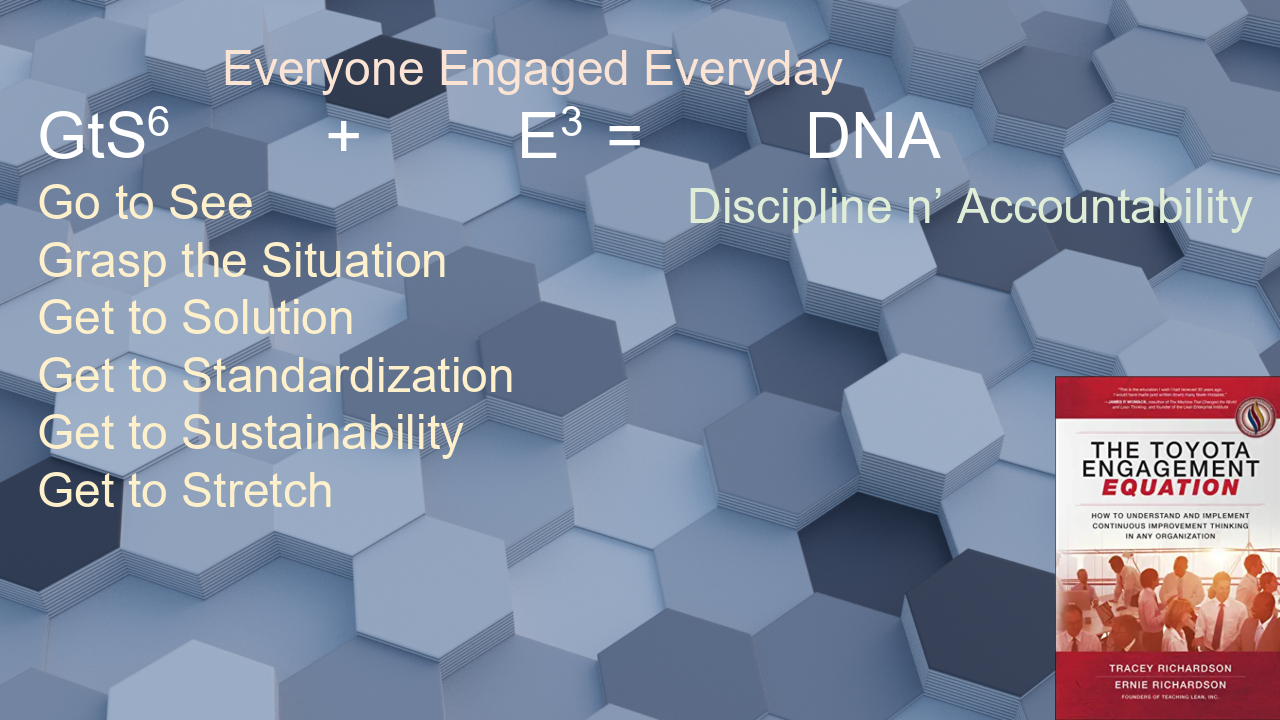
the personal journal of Brent Stewart


Toyota has been known for high quality for decades. That quality is widely attributed to a philosophy of manufacturing referred to as the Toyota Production System. That system focuses on single-piece flow manufacturing which makes things right the first time, eliminating waste, continuous improvement, automation, and Just-In-Time processes. Those goals are achieved by a motivated and aligned workforce. Other parts of the automotive industry (and other industries) study Toyota and try to understand how to emulate it’s success.
There’s a fascinating lineage of thought that goes from TPS to Lean, to DevOps, so it’s worth considering TPS as source material for the way we organize ourselves in IT (if that sounds interesting, a good first read is The Pheonix Project). My experience is that TPS can fit smoothly with an ITIL-based department and that it brings a lot of the correct concepts into IT.
Toyota’s manufacturing philosophy is well worth your time to consider, but that philosophy is only realized when the people involved buy into it. The Toyota Engagement Equation is about how the people at the Kentucky Toyota plant (TMMK) came to understand and implement TPS. It’s written by Tracey Richardson and her husband, Ernie Richardson. The Richardsons were in the first group of employees at TMMK and absorbed TPS as they grew through their careers. After Toyota, they founded Teaching Lean, Inc., and are part of the Lean Enterprise Institute.
Purchase The Toyota Engagement Equation at Amazon
The Richardsons moved from being inside a TPS environment to trying to teach the concepts to others. It’s clear they’ve had time to think about and distill that process. However, The Toyota Engagement Equation doesn’t really all of TPS. This book focuses on the mindset and approach that make people successful in that philosophy, and by extension how one manages consistent with TPS. As a consequence, it serves as a companion book to something like Modern Toyota Production System (Yasuhiro Monden).

Most books that describe the Toyota Production System are dry and the ones I’ve read can be abstract. I’ve worked in an environment that aspired to TPS success, and I understand that it is difficult to communicate these concepts both veritically and horizontally within an organization. There is a real dearth of engaging and entertaining material to train with and with which to pass along these concepts.
I’ve included a link to an HP training video on single piece flow that is excellent.
This book does a great job of relating the approach to the impact it has on the day-to-day life of the folks involved. The book centers on an “equation” that summarizes their approach – $ GtS^6 + E^3 = DnA $. There are chapters for Go to See, Grasp the Situation, Get to Solution, Get to Standardization, Get to Sustainability, and Get to Stretch. These inputs, combined with the chapters on Everyone Engaged Everyday, get us to a system of Discipline and Accountability.
The book is sprinkled with first hand stories, both from the Richardsons and from people they have worked with and taught. The stories serve to ground each lesson in a relatable situation, the Toyota resolution, and how that relates to the TPS philosophy. The book doesn’t supply enough detail to implement TPS concepts by itself, but if you have exposure to those concepts then this book will help you understand how to work and how to lead within that system.
The focus that this book puts on doing things right and building an engaged workforce makes it an easy read. I found it inspiring, even if applying the ideas still involves a lot of work past finishing the book.
I’ve started creating desktop backgrounds that summarize business books that I’ve found valuable. I like to rotate through them to help keep these concepts top-of-mind. There’s a link to the repository that has the backgrounds in the notes. I will also note that the link above is linked to my Amazon account, so if you’ve found this review useful please use it and help me buy the next book!